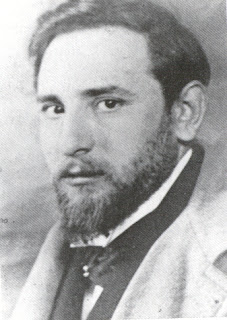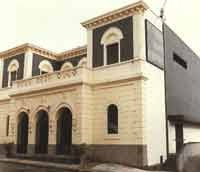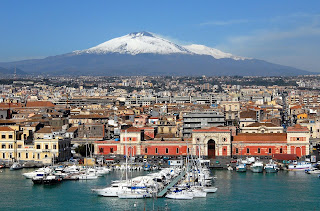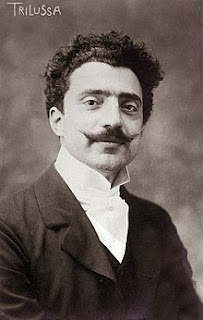Author whose most famous work became a staple text in Italian schools
 |
| Edmondo De Amicis's first writing drew on his service in the Italian Army |
Through its daily diary entries by the book’s central character, Enrico, interspersed with uplifting stories told by one of his teachers, Cuore - published for the first time in 1886 - came to be seen as something of a moral compass for young people growing up in post-unification Italy.
At a time when the newly-formed Italian State was keen to impose its authority over a Catholic Church that had vehemently opposed unification and still refused to recognise the new Kingdom of Italy, Cuore’s emphasis on values such as patriotism, compassion, diligence, and respect for authority, resonated deeply with the new secular government, reflecting exactly the moral and civic ideals it wished to be at the heart of society.
It became a staple in Italian public schools, remaining so for the best part of a century. Moreover, its appeal extended well beyond the borders of the fledgling Italian nation and was adapted and translated into at least 25 languages, earning De Amicis international acclaim.
Although Cuore - Heart - was by some way the biggest success of his literary career, De Amicis also won praise for the travel books he wrote while working as a foreign correspondent for the Rome newspaper La Nazione.
One of these - Constantinople (1877) - was seen as the best description of the Turkish city now known as Istanbul to be published in the 19th century. A new edition of the book was published in 2005.
In addition to Cuore, De Amicis, who was a member of Italy’s Chamber of Deputies for the Italian Socialist Party between 1906 and his death in 1908, wrote a number of later novels that reflected his interest in such matters as social reform, education, and workers’ rights.
De Amicis himself had been born into a wealthy family. His father, Francescso, was a royal banker in the salt and tobacco sector. His original home in Oneglia and the one to which the family moved in Cuneo, Piedmont, when he was two years old, were both spacious and elegant properties.
 |
| Cuore became staple reading for generations of Italian schoolchildren |
This experience, shaped as it was by Italy’s turbulent path towards unification, profoundly influenced his destiny. As an officer in the Royal Italian Army, he participated in the Third War of Independence and fought in the Battle of Custoza in 1866. Italy’s defeat by Austria left De Amicis deeply disillusioned, leading him to resign from military service and turn to writing.
At first, it was as a military journalist, moving to Florence to edit L'Italia militare, the official publication, for whom he wrote military sketches, later collected in a book entitled La vita militare - Military Life. His vivid portrayals of army life were well received and became the launch pad for his new career.
De Amicis soon became a news journalist and travel writer, journeying across Europe, North Africa, and the Near East. Travel books such as Spagna (1873), Olanda (1874), and the aforementioned Costantinopoli (1878) were celebrated for their rich descriptions and cultural insights, blending reportage with literary flair.
It was Cuore, however, that was the turning point of his literary life. Its themes promoted a strong sense of national identity, emphasising loyalty to Italy, respect for its institutions and admiration for its heroes, especially those who made the ultimate sacrifice on the battlefield.
The stories told by young Enrico’s teacher, meanwhile, taught virtues such as honesty, courage, humility and compassion, while often featuring children from different regions of Italy, reinforcing unity through shared values.
.jpg) |
| De Amicis entered Italian politics towards the end of his life |
De Amicis ultimately returned to Piedmont, with homes in Turin and Pinerolo. It was the school life of his sons Furio and Ugo, students at the Boncompagni Elementary School in Turin, that inspired him to write Cuore.
His last years were overshadowed by sadness, at the death of his mother, his fractious relationship with his wife and ultimately the suicide of Furio, his eldest son. It prompted him to leave Turin soon after the turn of the century, thereafter leading a nomadic existence that included time in Florence and Catania, in Sicily.
He died during a stay in Bordighera, in Liguria, where he suffered a cerebral haemorrhage while resident at the then Hotel Regina, which he had chosen as his base because George MacDonald, a Scottish poet he admired, had lived there a few years earlier. The building, at Via Vittorio Veneto 34, has commemorative plaques to them both.
De Amicis was laid to rest in the family tomb, in the monumental cemetery of Turin.
_02.jpg) |
| Piazza Dante is a the central square in the part of Imperia that makes up the former Oneglia |
Oneglia, where De Amicis was born, was a town about 120km (75 miles) from Genoa along the western coast of Liguria. It was joined to Porto Maurizio in 1923 by Fascist ruler Benito Mussolini to form the municipality known as Imperia. The area has become well known for cultivating flowers and olives and there is a Museum of the Olive in the part of the city that used to be Oneglia. One of Italy’s most famous olive oil producers and connoisseurs, Filippo Berio, was born in Oneglia in 1829. The Porto Maurizio area is characterised by steep, narrow streets and loggias with an elevated position offering views across the Ligurian Sea, while the Oneglia part of Imperia is on the whole a modern town, one exception being the streets behind the Calata Cuneo in the port area. Today, Imperia is part industrial port and part tourist resort. What used to be Oneglia is at the eastern end of Imperia, around Piazza Dante, which is at the centre of a long shopping street, Via Aurelia.
Stay in Imperia with Hotels.com
 |
| Picturesque side streets are part of the charm of Bordighera |
Bordighera, where De Amicis died, is a small, picturesque town on Italy’s western Riviera, just 20km (12 miles) from Italy’s border with France. It is famous for its flower industry and was a popular holiday destination for the British during Queen Victoria’s reign. Being situated where the Maritime Alps meet the sea, it enjoys the benefit of a climate that invariably produces mild winters. It was the first town in Europe to grow date palms. Its seafront road, the Lungomare Argentina - named in honour of a visit to the town by Evita Peron in 1947 - is 2.3km (1.4 miles) long and is said to be the longest promenade on the Italian Riviera. Queen Margherita of Savoy - wife of Umberto I - had a winter palace, Villa Margherita, in the town. Bordighera was the scene of a meeting in 1941 between Italy’s Fascist leader, Benito Mussolini, and his Spanish counterpart, Francisco Franco, to discuss Spain’s entry to World War Two on the side of Italy and Germany, although in the end Spain remained nominally neutral.
Find accommodation in Bordighera with Expedia
More reading:
Maria Montessori and the launch of what became a worldwide network of schools
How the first free public school in Europe opened in Frascati, just outside Rome
A soldier-turned-writer who fought alongside unification hero Garibaldi
Also on this day:
1581: The birth of Baroque master Domenichino
1898: The birth of Prince Amedeo, Duke of Aosta
1928: The birth of anarchist Giuseppe Pinelli, inspiration for Dario Fo play
.jpg)







.jpg)





.jpg)
.jpg)

.jpg)



.jpg)







